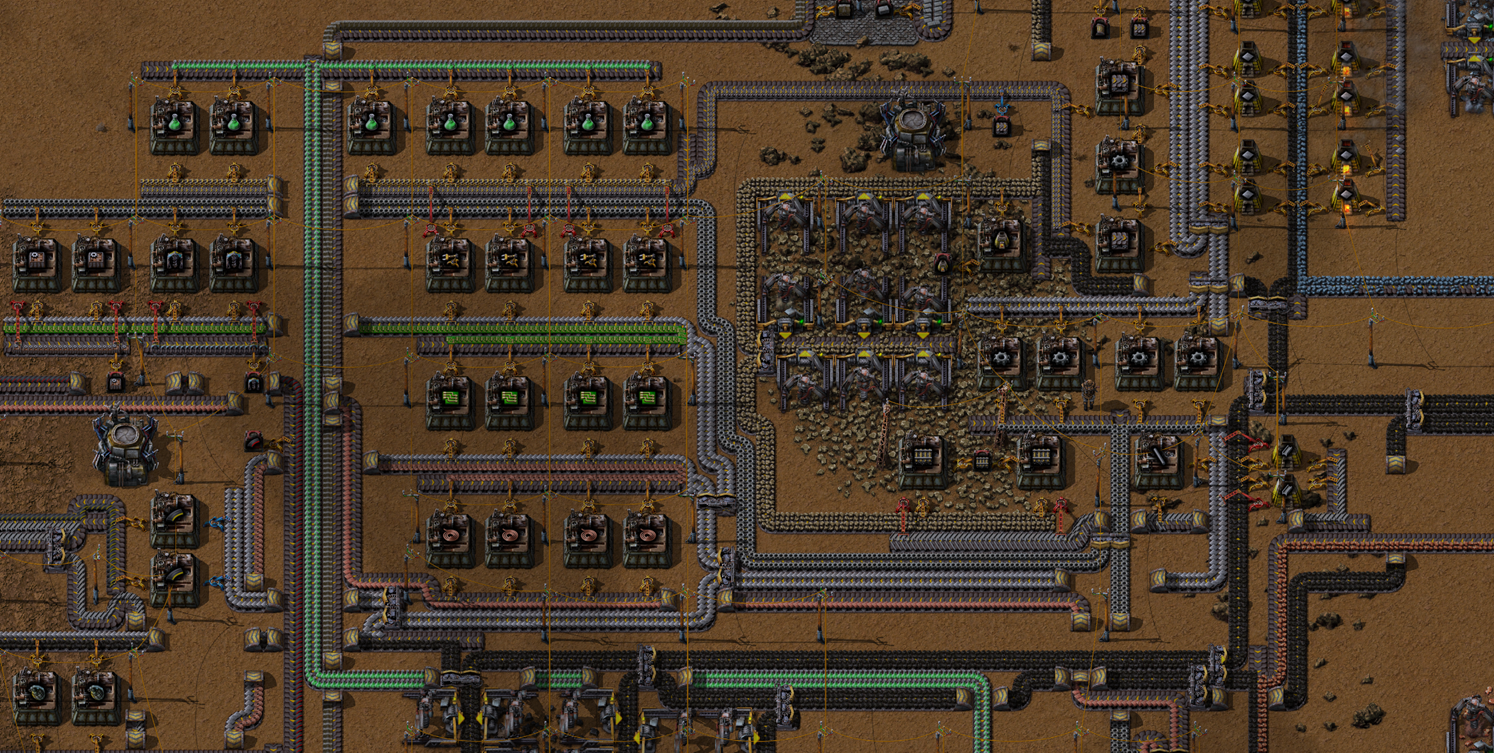The 3 stages of a factory
Scaling your factory is a progressive task in Factorio. You can notice 3 kind of factory designs, each allowing production at a greater scale but also requiring more and more complex planning. A good idea to keep in mind is that the goal of each stage is to build the next stage. You are basically building factories to build bigger factories.
Stage 1: messy start
This is your initial factory, very likely made of ad-hoc and messy belt layouts. Don’t overthink this stage, as it requires little planning since it won’t have bad long term consequences. The goal here is to go through some basic research (red and red+green science) and produce enough construction materials for building the next stage. You can have crossings, weird splits and cramped designs like in the example below:

| Stage | 1 |
|---|---|
| Do | Automate basic items (belts), Have fun! |
| Don’t | Optimize for long term, or go beyond green science (maybe black) |
| Code equivalent | Spaghetti code |
Stage 2: the Mainbus
Here your goal is to organize production around a central main bus where all resources are stored. On the side of the mainbus are production zones, taking resources from the bus before putting the end result back in the bus on a new lane. Setting up the mainbus requires careful initial planning to decide for the bus direction (avoid going directly towards water!) and thinking about which resource patches you’ll be mining.
It is also important to produce enough of basic materials like iron, copper and green circuits, otherwise you’ll be facing constant starvation at the end of the bus. Especially since extensibility is hard once the bus is built and surrounded with production areas.

| Stage | 2 |
|---|---|
| Do | Plan ahead for your bus, produce enough of basic materials |
| Don’t | Cut lanes, you may need it later |
| Code equivalent | Modular monolith |
Stage 3: distributed factory
This is the most complex but also fun design, allowing to massively scale the factory throughput. Each resource will be produced in its own area, with inputs brought by trains. Outputs will also be loaded on trains. You can therefore distribute the production around the map and build each area as big as required. Remember to leave some space around areas, since what you think “big enough” initially will just be way too small later on.
This layout requires a lot of resources just to build the train network, the stations, and all the belts required to mix inputs properly. See an example for building composite materials on the picture below.
It is highly recommended to blueprint the repeated sections, like loading and unloading stations, belt balancers and so on. I will share my blueprints library in a future post if people are interested.
Be careful about your train network, if it gets stuck (usually due to bad train signals), the entire factory will stop!

| Stage | 3 |
|---|---|
| Do | Standardize layouts, Think big! |
| Don’t | Allow trains to get stuck |
| Code equivalent | Distributed systems, trains are messages |
Conclusion
We have seen the characteristics of the three common stages of a growing factory in Factorio. Can you think about a fourth stage?
comments powered by Disqus